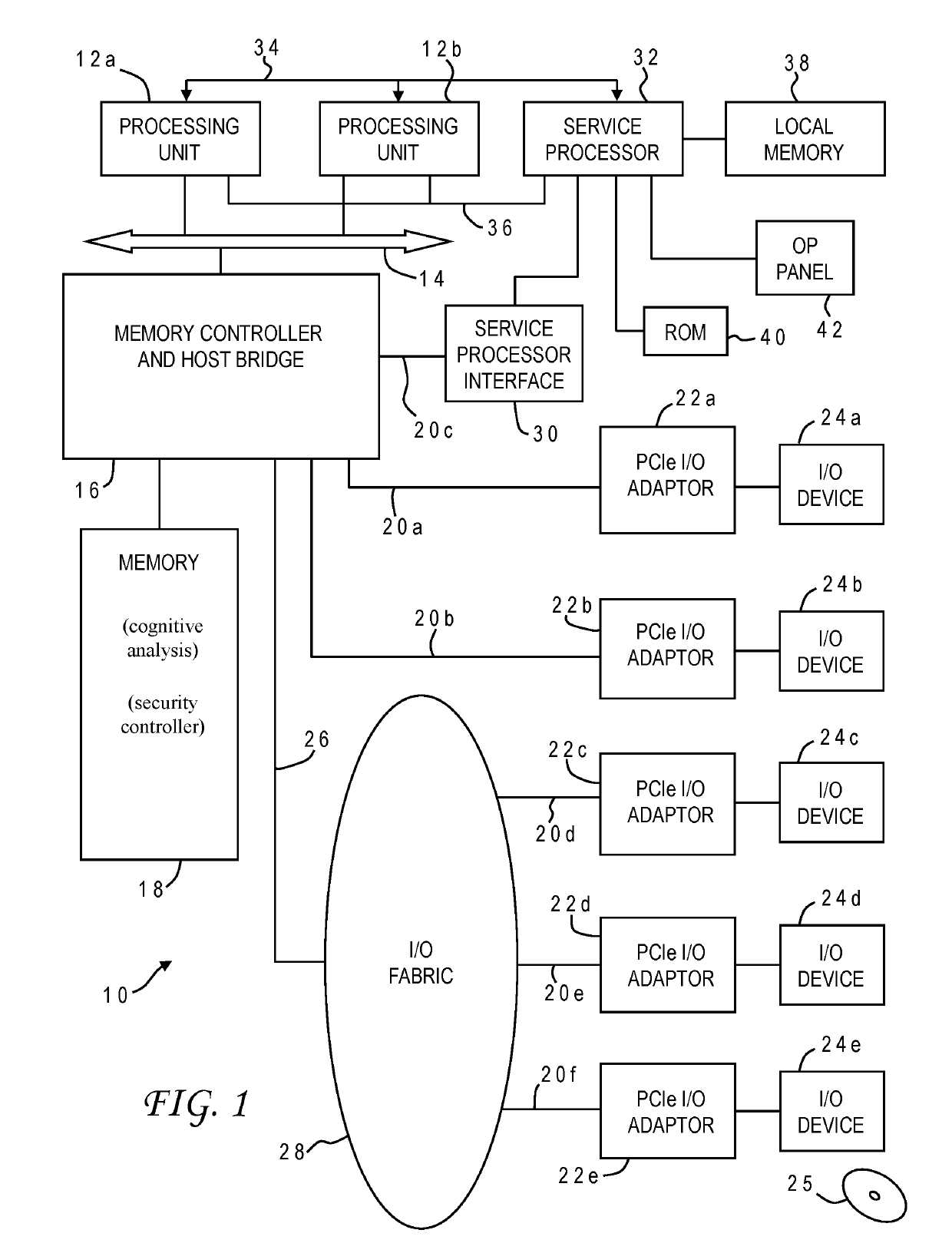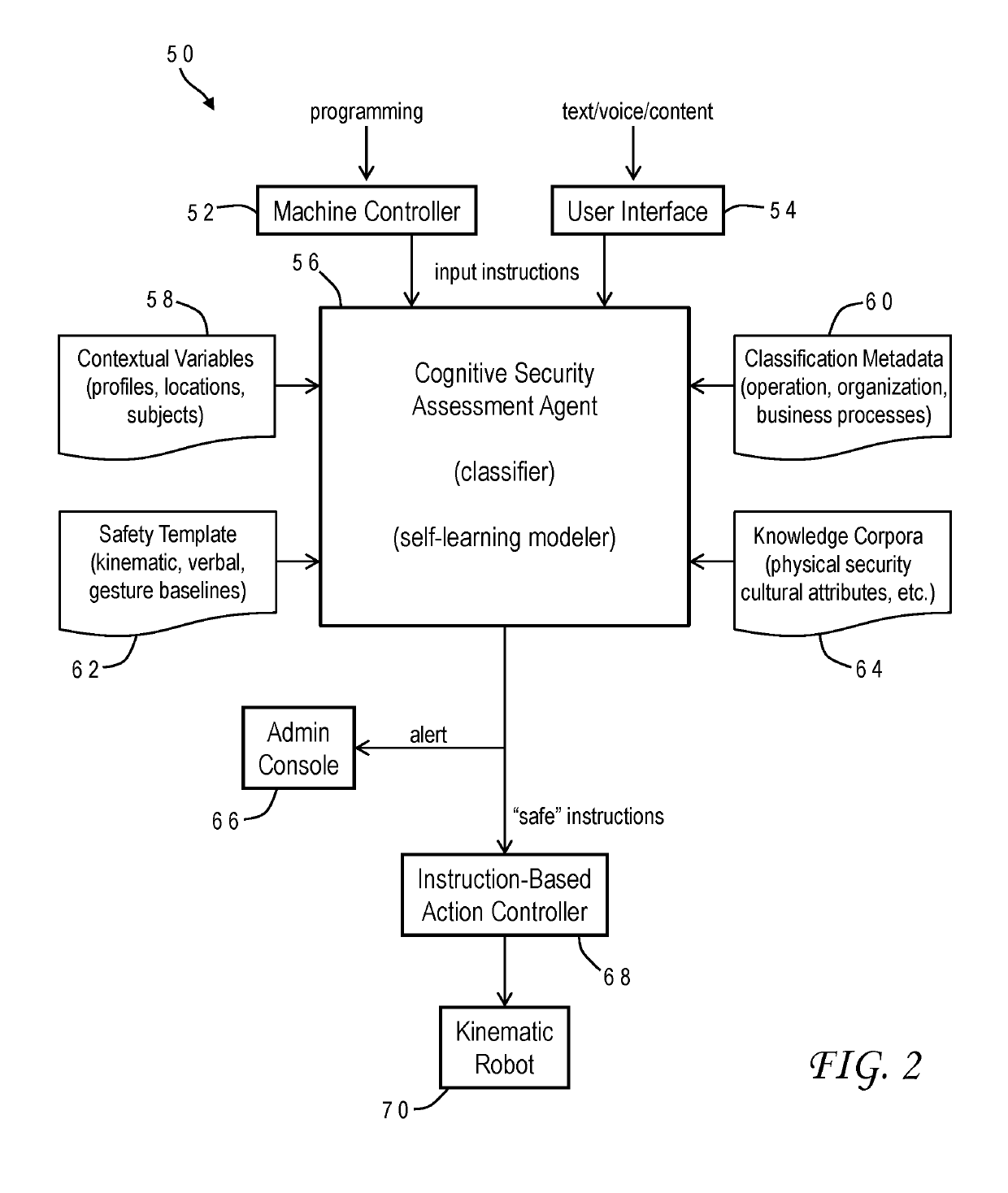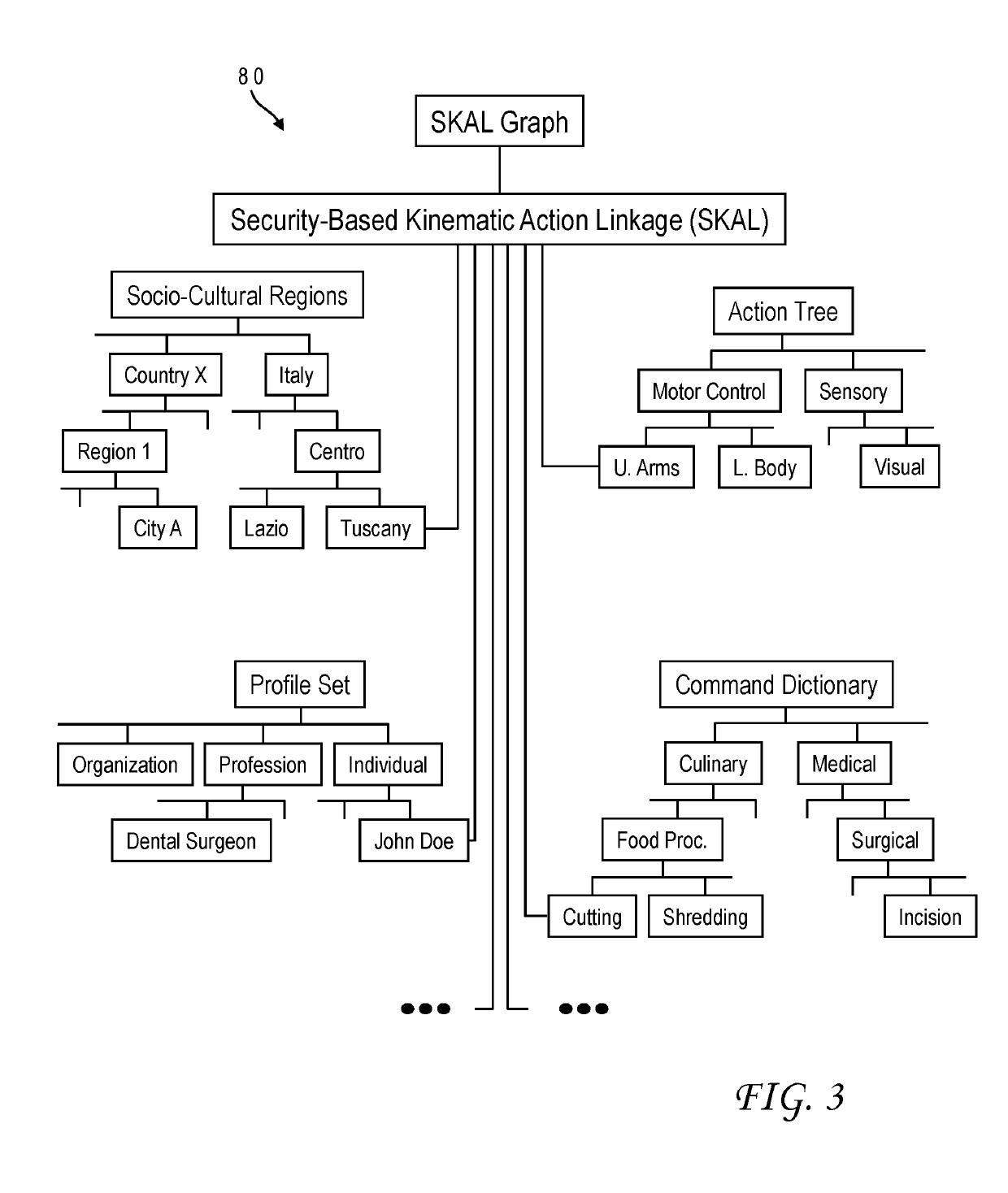Cognitive learning to counter security threats for kinematic actions in robots
a technology of kinematic actions and learning, applied in the field of electronic control systems, can solve the problems of increasing the possibility of unpleasant results of such intrusions, serious bodily injury, financial damage, and less tangible harm, and malicious actors (hackers) can wreak havoc on these systems
- Summary
- Abstract
- Description
- Claims
- Application Information
AI Technical Summary
Problems solved by technology
Method used
Image
Examples
Embodiment Construction
)
[0015]Robotic systems are becoming increasingly pervasive in all facets of human existence, drawing the attention of hackers who may want to impair such systems whether for financial gain or out of pure spite. While solutions have been offered to combat cyber security threats to robotic systems, these solutions often fall short and do not prevent serious intrusions. In particular, they fail to provide any mechanism to accurately distinguish between legitimate instructions and potentially disruptive ones.
[0016]It would, therefore, be desirable to devise an improved method of countering security threats which could allow a robotic system to make threat assessments regarding proposed instructions to the system. It would be further advantageous if the method could provide the ability for a robotic system to autonomously learn to secure its controlling and distributed systems, for identification and mitigation of evolving and dynamic security threats. These challenges are overcome in va...
PUM
 Login to View More
Login to View More Abstract
Description
Claims
Application Information
 Login to View More
Login to View More - R&D
- Intellectual Property
- Life Sciences
- Materials
- Tech Scout
- Unparalleled Data Quality
- Higher Quality Content
- 60% Fewer Hallucinations
Browse by: Latest US Patents, China's latest patents, Technical Efficacy Thesaurus, Application Domain, Technology Topic, Popular Technical Reports.
© 2025 PatSnap. All rights reserved.Legal|Privacy policy|Modern Slavery Act Transparency Statement|Sitemap|About US| Contact US: help@patsnap.com



